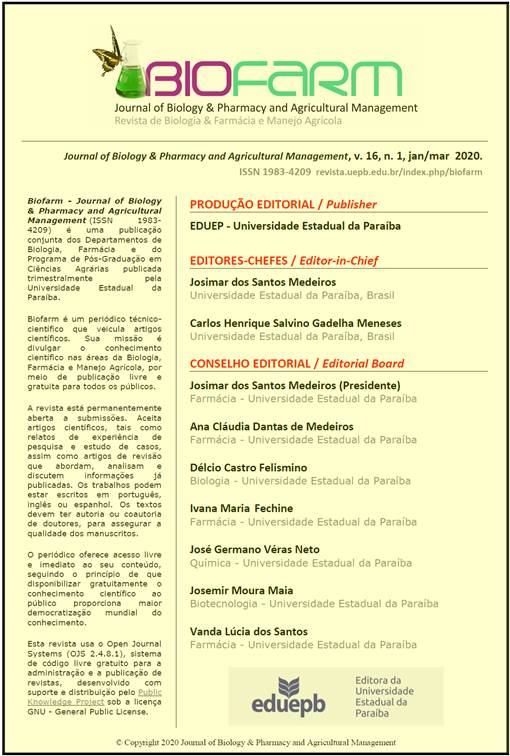AVALIAÇÃO DA ALFACE EM DUAS ÉPOCAS DE SEMEIO EM SISTEMA HIDROPÔNICO
Resumo
A hidroponia possui características que favorecem sua indicação para regiões semiáridas. Objetivou-se avaliar o cultivo hidropônico de cultivares de alface no agreste paraibano. A pesquisa foi realizada em Lagoa Seca/PB, seguindo delineamento de blocos casualizados, em esquema fatorial 2 x 7, avaliando-se épocas de plantio (chuvosa e estiagem), sete cultivares de alface (Vera, Elisa, Lavínia, Regiane, Mimosa, Sophia e Mila) e cinco repetições. Aos 49 dias após o plantio, foram analisados o número de folhas, fitomassa fresca e seca das folhas, fitomassa fresca e seca do caule, fitomassa seca da raiz e produtividade. As variáveis foram submetidas à análise de variância pelo teste F a 5% de probabilidade. Foi realizado o teste de Scott-Knott para comparação das médias. De modo geral, para o cultivo hidropônico, as cultivares Elisa, Lavínia, Regiane e Mimosa apresentaram os melhores potenciais de produtividade, nas condições experimentais do agreste paraibano.
Downloads
Publicado
Como Citar
Edição
Seção
Licença
Copyright (c) 2023 BIOFARM - Journal of Biology & Pharmacy and Agricultural Management

Este trabalho está licenciado sob uma licença Creative Commons Attribution 4.0 International License.
Authors and co-authors retain copyright, but cede the right to first publication to the Journal of Biology & Pharmacy and Agricultural Management (BIOFARM).
Copyright encompasses exclusive rights to reproduce and deliver the article in all form and media, including reprints, photographs, microfilms and any other similar reproductions, as well as translations. The reproduction of any part of this journal, its storage in databases and its transmission by any form or media - such as electronic, electrostatic and mechanical copies, photocopies, recordings, magnetic media, etc. - will be allowed only with a written permission from the BIOFARM.
Articles published in BIOFARM will be Open-Access articles distributed under the terms and conditions of the Creative Commons Attribution License (CC BY). The copyright is retained by the author(s). BIOFARM will insert the following note at the end of the published text:
© 2023 by the authors; licensee BIOFARM, Campina Grande, Brazil. This article is an open access article distributed under the terms and conditions of the Creative Commons Attribution License (http://creativecommons.org/licenses/by/4.0/).


